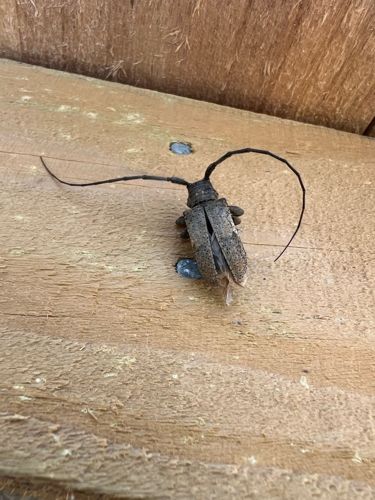Broad-necked Root Borer
Scientific Name: Prionus laticollis
Order & Family: Order: Coleoptera, Family: Cerambycidae (Long-horned beetles)
Size: Adults typically range from 25 to 60 mm (1 to 2.4 inches) in length.

Natural Habitat
Forests, woodlands, and areas with dead or dying hardwood trees, often found near oak, chestnut, and maple.
Diet & Feeding
Adults are not known to feed. Larvae feed on dead and decaying heartwood of various hardwood trees.
Behavior Patterns
Adults are nocturnal and are attracted to lights. Larvae bore into the heartwood of various trees, developing over several years. They can cause significant damage to stressed or recently fallen trees.
Risks & Benefits
Potential Risks: Can be a pest in forestry, damaging timber and weakening trees. The larvae's boring activity can compromise the structural integrity of dead or stressed trees, posing a fall hazard. Potential Benefits: Plays a role in decomposition, breaking down dead wood and recycling nutrients back into the ecosystem.
Identified on: 8/24/2025